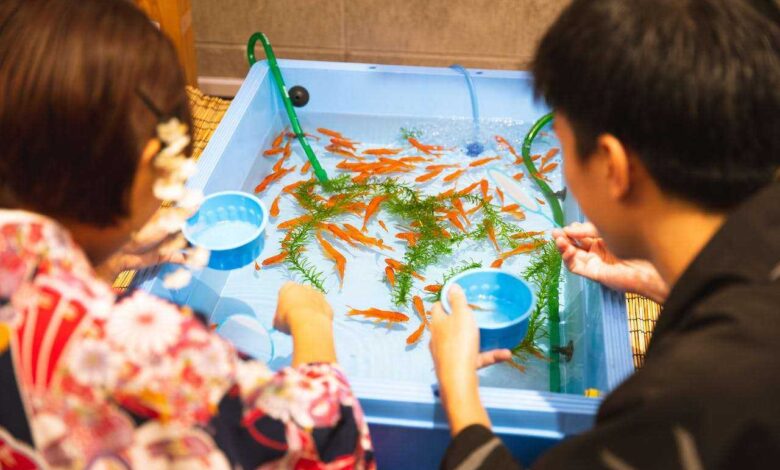The Most Common Pet Fish Diseases and How to Treat Them

Ensuring the health and well-being of your pet fish is crucial for a thriving aquatic environment. Understanding the common fish diseases, their symptoms, and appropriate treatment methods is essential for maintaining a healthy aquarium. Learn how to identify, prevent, and effectively treat various fish illnesses.
Most Common Pet Fish Diseases
Explore prevalent fish diseases that may affect your aquatic pets, including ich, fin rot, white spot, velvet, dropsy, swim bladder disease, constipation, pop eye, anchor worms, parasites, and fungal infections. Understand their causes, symptoms, and potential implications for your fish.
A Comprehensive Approach
Discover effective treatment methods for various fish illnesses, including administering medications, implementing water quality management, and creating an ideal environment for your fish’s recovery. Learn how to conduct water changes and maintain optimal tank conditions to aid the healing process.
Recognizing Symptoms
Familiarize yourself with the typical symptoms associated with common fish diseases, such as abnormal swimming patterns, changes in appearance, loss of appetite, and abnormal growths. Learn how to identify these symptoms early to promptly address any potential health concerns.
Promoting a Healthy Environment
Implement proactive measures to prevent fish diseases by maintaining proper water parameters, ensuring adequate filtration, and regularly cleaning the tank. Explore strategies for quarantine procedures when introducing new fish to your aquarium to prevent the spread of diseases.
Effective Medications and Treatments
Understand the types of medications and treatments available for specific fish diseases, including anti-parasitic medications, antibacterial treatments, and antifungal solutions. Learn about their appropriate usage and potential side effects to ensure the safe and effective recovery of your fish.
1. How to Treat Ich in Fish
Ich, or white spot disease, is a common fish parasite. Treat it by raising the water temperature to accelerate the parasite life cycle, adding aquarium salt, and using anti-parasitic medications as recommended.
2. How to Treat Fin Rot in Fish
Fin rot can be caused by bacteria or poor water conditions. Treat it by improving water quality, removing affected tissue, using antibacterial medications, and maintaining a stress-free environment for the fish.
3. How to Treat White Spot in Fish
White spot, or ich, is a highly contagious parasitic disease. Treat it by adjusting the water temperature, adding salt to the aquarium, using anti-parasitic medications, and ensuring proper filtration and water quality.
4. How to Treat Velvet in Fish
Velvet, another parasitic disease, appears as a gold or rust-colored dust on the fish. Treat it by raising the tank temperature, administering anti-parasitic medications, and ensuring a stress-free environment for the affected fish.
5. How to Treat Dropsy in Fish
Dropsy is a symptom of underlying issues such as organ failure or bacterial infection. Treat it by quarantining the affected fish, maintaining optimal water parameters, administering antibiotics, and providing supportive care to boost the fish’s immune system.
6. How to Treat Swim Bladder Disease in Fish
Swim bladder disease can result from overfeeding or bacterial infection. Treat it by adjusting the fish’s diet, ensuring proper water quality, and providing supportive care. In severe cases, consult a vet for possible antibiotic treatments.
7. How to Treat Constipation in Fish
Constipation can be caused by an improper diet or digestive issues. Treat it by adjusting the fish’s diet, incorporating fiber-rich foods, and occasionally using peas to help alleviate constipation and restore normal digestive function.
8. How to Treat Pop Eye in Fish
Pop eye can be a symptom of an underlying infection or poor water quality. Treat it by improving water conditions, using antibacterial medications, and providing a well-balanced diet to boost the fish’s immune system and promote healing.
9. How to Treat Anchor Worms in Fish
Anchor worms are visible parasites that can be removed manually or treated with anti-parasitic medications. Carefully remove visible worms, treat the affected area with medications, and ensure optimal water conditions to prevent reinfestation.
10. How to Treat Parasites in Fish
Parasites can manifest in various forms and require targeted treatments. Identify the specific parasite type, use appropriate anti-parasitic medications, maintain optimal water conditions, and consider quarantining affected fish to prevent the spread of infection.
11. How to Treat Fungus in Fish
Fungal infections can occur as a result of wounds or poor water quality. Treat them by improving water conditions, using anti-fungal medications, and providing a stress-free environment for the affected fish to aid in the healing process.
By implementing these specific treatment methods, you can effectively address various fish diseases and promote a healthy environment for your beloved aquatic pets.
Natural and Safe Solutions
Discover alternative home remedies for treating mild fish illnesses, including salt baths, garlic supplements, and herbal treatments. Explore natural approaches to promote healing and reduce stress for your fish, supplementing conventional treatments when applicable.
Preventative Measures for Long-Term Fish Health
Establish a comprehensive fish care routine that includes regular tank maintenance, proper feeding practices, and stress reduction techniques to promote the long-term health and well-being of your pet fish. Implementing a holistic approach to fish care can significantly reduce the risk of common fish diseases.
Most Common Pet Fish Diseases
By familiarizing yourself with the most common pet fish diseases and their appropriate treatment methods, you can ensure a healthy and thriving aquatic environment for your beloved pet fish. If you require further guidance or have specific concerns, do not hesitate to consult with a qualified aquatic veterinarian or experienced fish care specialist.









I can’t tell you how useful the flea-and-tick prevention article was. I followed your seasonal schedule and tips—no more scratching in our household! Your content is always thorough and caring; keep it up.